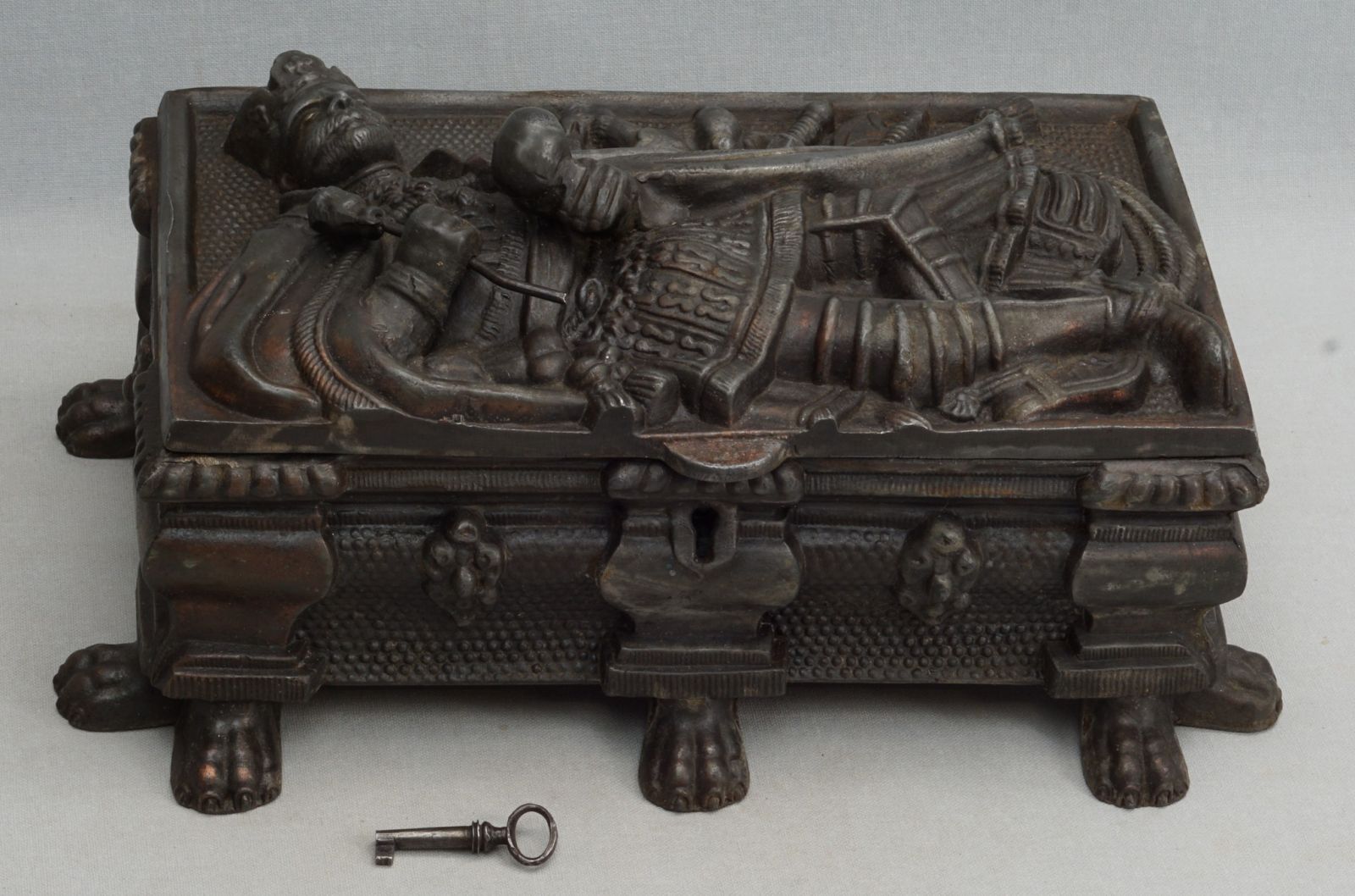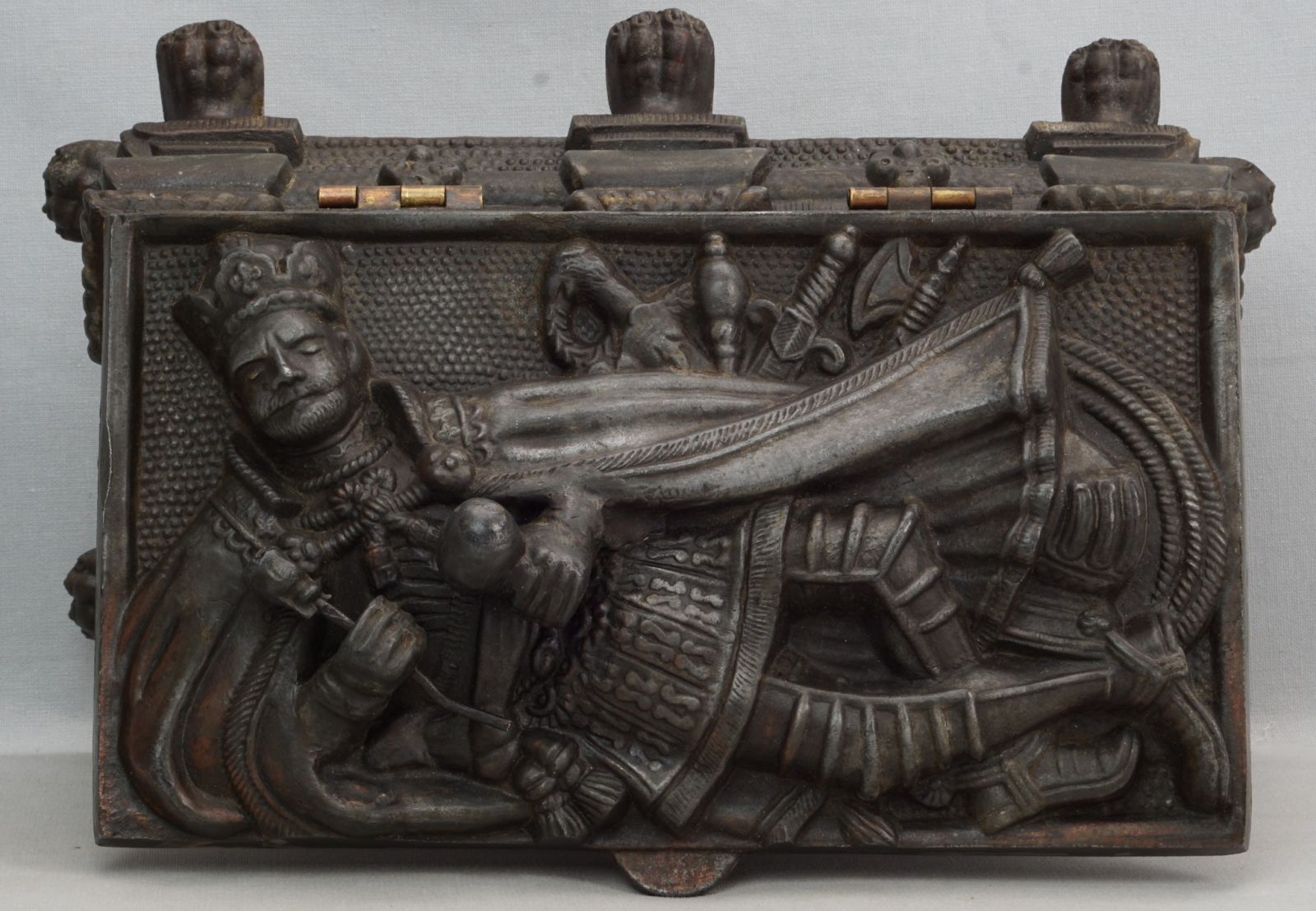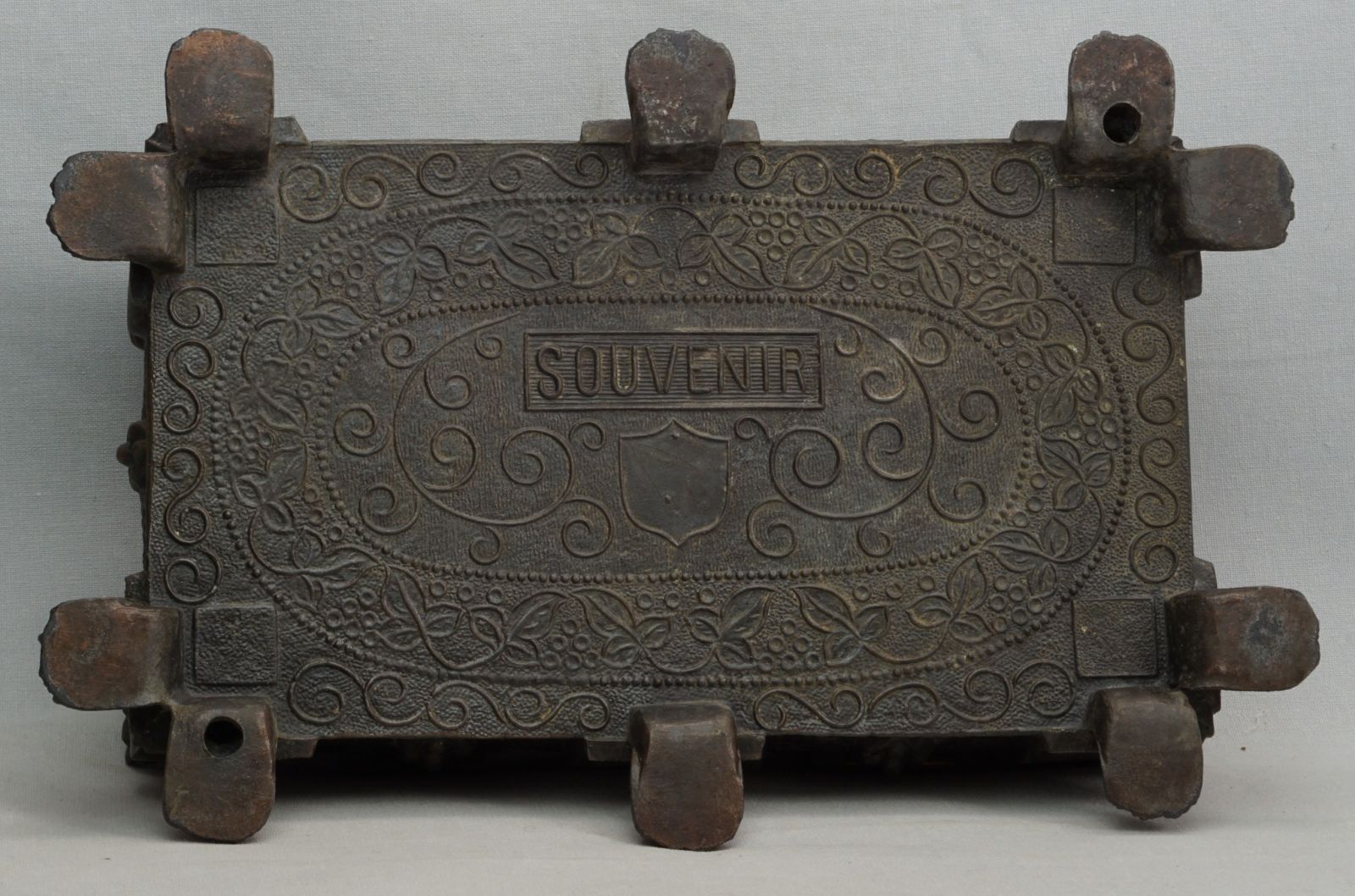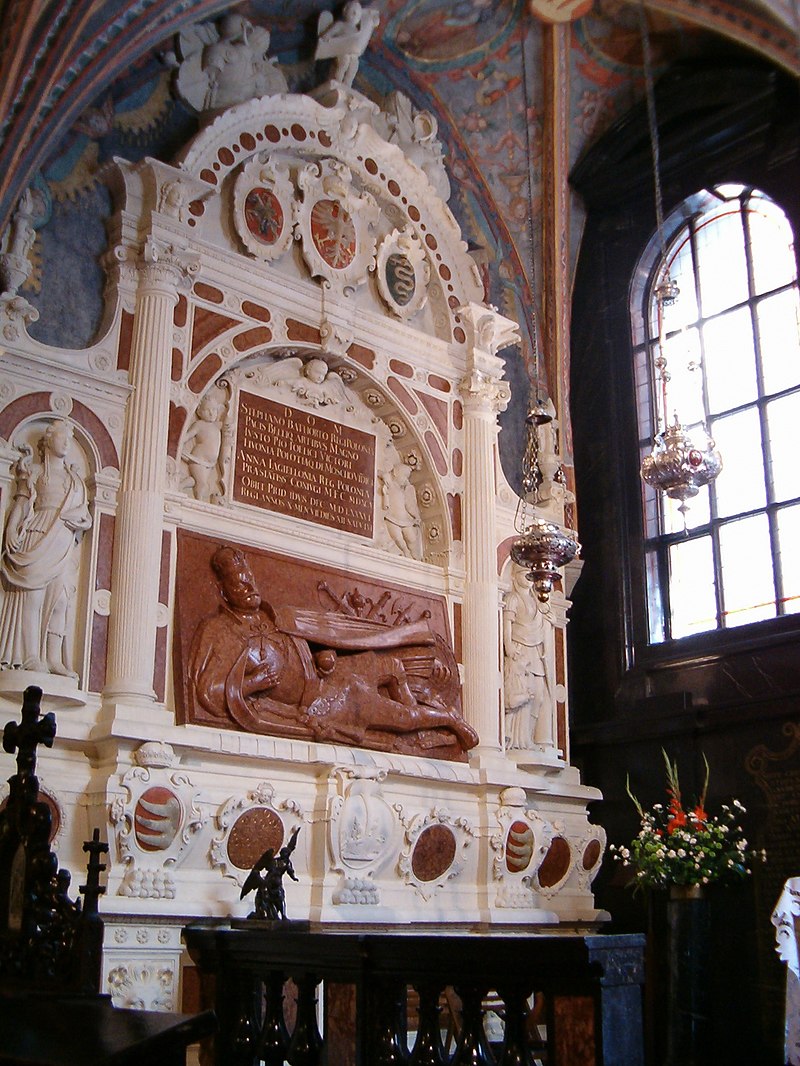Boxes
Beautiful and attractive caskets have been delighting us with their variety since ancient times. They adorn our homes and are intended for storing jewelry or various small items.
In the collection of the Narva Museum, there are over 70 caskets from the collection of the Lavretsovs, who not only collected works of art but also added to the collection with items of applied art.
The attention is drawn to a casket with an image of a Polish king. It is notable for its unusual theme, as it replicates the tombstone of Stephen Báthory located in Wawel Cathedral in Krakow, the burial place of Polish monarchs. This is a small rectangular casket on lion paw feet, cast from zinc. On the lid, there is a figure of a semi-reclining king in a crown and ceremonial armor, holding a scepter and orb, symbols of royal authority.
Caskets with relief images of kings were produced by the Warsaw factory of metal and lacquered products of Karol Mintern in the mid-19th century. The factory produced about 20 types of caskets, in reduced form, imitating the tombs of Polish rulers. Such caskets became exquisite souvenirs and inexpensive commemorative items. Associated with patriotic themes, they fostered interest in national history.
Stefan Batory ruled the Polish-Lithuanian Commonwealth from 1576 to 1586. He participated in the Livonian War from 1558 to 1583. Batory was an opponent of Ivan the Terrible and successfully waged war against Russian forces. On June 11, 1584, the Polish king granted city rights to Valga (formerly Walk). In 2002, in memory of Stefan Batory, a memorial plaque with the king's image and dedication was installed in the city of Valga.




